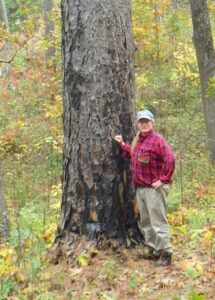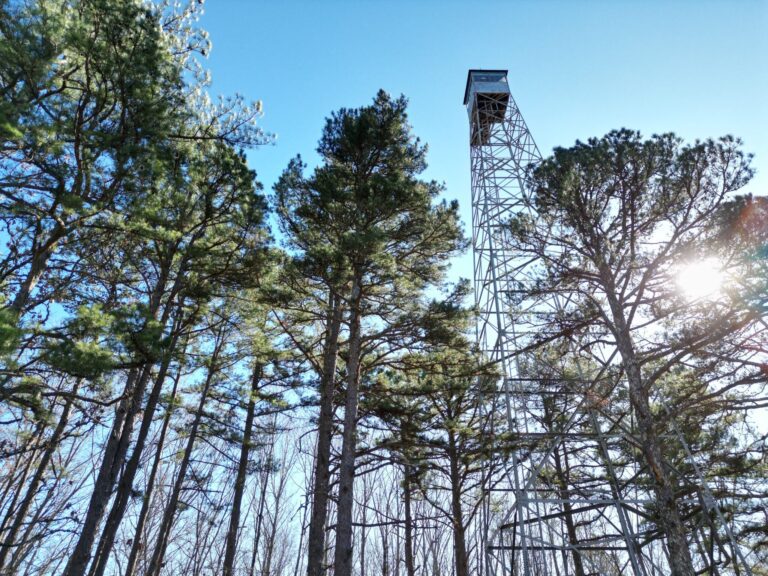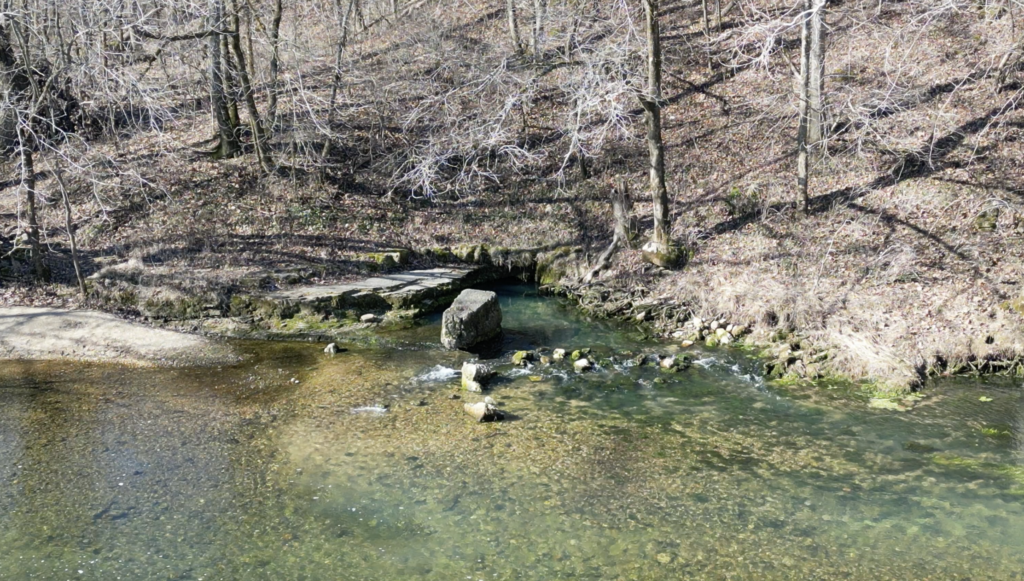March Monthly Meeting
Our March Meeting will take place on Friday March 1st! Join us at 7:30 a.m. at the Watershed Center to learn about the historic Gasconade Mills.
James M. Guldin, Ph.D., will present on the Gasconade Mills: A Historical Retrospective on the first commercial harvests of shortleaf pine in Missouri.
 Mr. Guldin is a retired USDA Forest Service research scientist in forest ecology and silviculture. His expertise is in the ecology and management of southern pines and in the active management of southern pine, and pine-hardwood stands to restore open fire-dependent ecosystems. In retired life, Jim serves on the Board of Directors of the L-A-D Foundation, the Lovett Pinetum in Strafford, and works under several part-time contracts with the USDA Forest Service to provide forestry education for agency personnel. Jim’s hobbies include woodworking, wet-wade and kayak fishing for smallmouth bass, and trying not to crash his drone in the woods.
Mr. Guldin is a retired USDA Forest Service research scientist in forest ecology and silviculture. His expertise is in the ecology and management of southern pines and in the active management of southern pine, and pine-hardwood stands to restore open fire-dependent ecosystems. In retired life, Jim serves on the Board of Directors of the L-A-D Foundation, the Lovett Pinetum in Strafford, and works under several part-time contracts with the USDA Forest Service to provide forestry education for agency personnel. Jim’s hobbies include woodworking, wet-wade and kayak fishing for smallmouth bass, and trying not to crash his drone in the woods.
Following Mr. Guldin’s presentation, the Department of Natural Resources will give a quarterly update, and meeting attendees are encouraged to share brief updates.
This meeting will be at the Watershed Center, 2400 E Valley Water Mill Road, Springfield, MO 65803.

More on Mr. Guldin
Jim Guldin is a retired research scientist in forest ecology and silviculture and lives with his wife Melissa in the Southern Hills neighborhood of Springfield. After degrees in forestry from Penn State, Yale, and Wisconsin-Madison, Jim served on the faculty of the School of Forestry at the University of Arkansas at Monticello from 1982 to 1992. Then he spent 28 years with the Southern Research Station of the USDA Forest Service as a Research Forest Ecologist, Project Leader, and Center Director, working from a duty station in Hot Springs, Arkansas.
Guldin’s expertise is in the ecology and management of southern pines, especially shortleaf pine, and in the active management of southern pine stands using thinning and prescribed burning to restore open fire-dependent ecosystems. After his retirement at the end of 2020, the Guldins moved to Springfield to be closer to the Wright County farm where their son, DVM daughter-in-law, and 6-year-old granddaughter live.
In retired life, Jim serves on the Board of Directors of the L-A-D Foundation, which oversees the 144,000-ac Pioneer Forest in the SE Missouri Ozarks, and recently joined the Board of Directors of the Lovett Pinetum in Strafford, Missouri. In addition, the Forest Service has hired Jim back under part-time contracts to provide continuing education in ecology and management of southern pines for agency personnel. Guldin is a Fellow of the Society of American Foresters, was inducted into the Arkansas Foresters’ Hall of Fame in 2021, and received the Lifetime Achievement Award for Silvicultural Excellence from the Washington Office of the Forest Service in 2022. Jim’s hobbies include woodworking, wet-wade and kayak fishing for smallmouth bass, and trying not to crash his drone in the woods.

Drone Footage from Mr. Guldin: Boiling Spring on Big Piney River
More on the Gasconade Mills:
The State of Missouri recently passed a significant milestone–the 200th anniversary of the first commercial timber harvests of shortleaf pine in the State. It was a quiet anniversary in the third decade of the 21st century. But in the third decade of the nineteenth century, sawmills began operations along the Big Piney River and Little Piney Creek in Phelps, Pulaski, and Texas counties, triggered by demand for construction materials after the War of 1812. Schoolcraft mentioned the mills during his explorations in 1818-1819. Water-powered sash mills were built by entrepreneurs along the rivers, and dimension lumber was produced from shortleaf pine. The delivery of that lumber to market was done by river transport; cribs of sawn lumber were prepared on land, launched into the rivers, and floated down the Big Piney, the Gasconade, and the Missouri rivers to St. Louis. By 1840, at least six mills were in operation in the “Gasconade Mills” along the Big Piney River, and this industrial activity continued and grew until the start of the Civil War. A review of this unique history is presented, which depended on Ozark springs for power and Ozark rivers for transportation.
